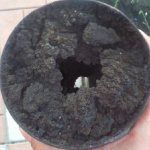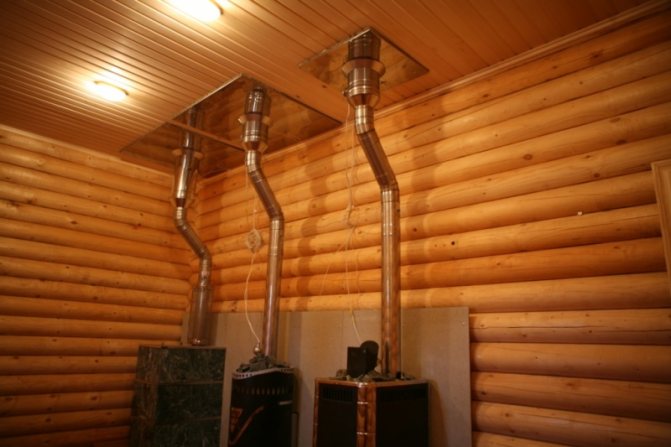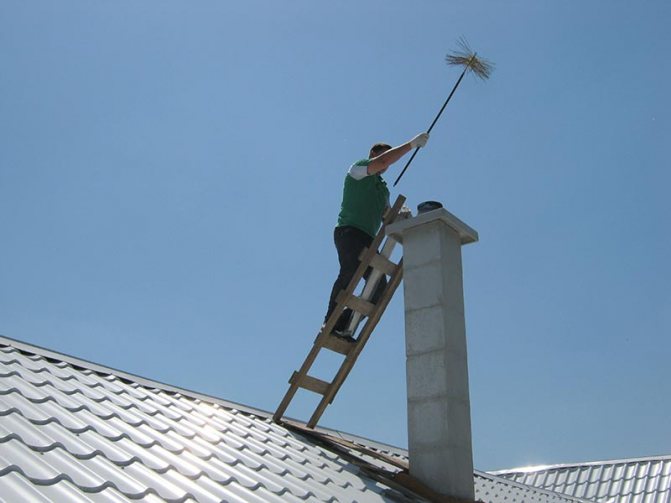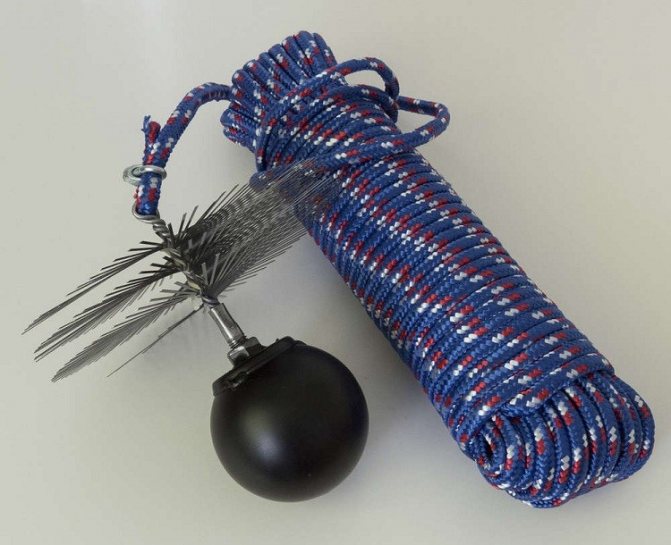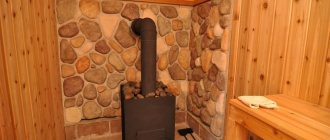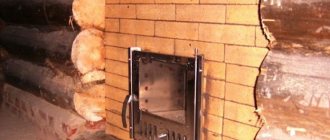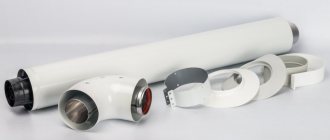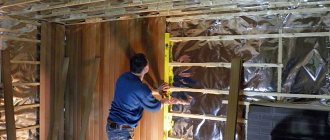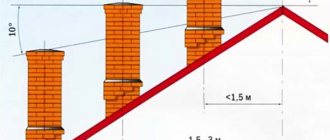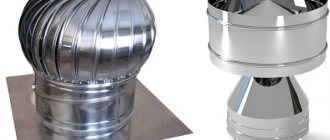Heating a sauna stove with wood or coal gives a lot of heat, but a side effect of fuel combustion will always be the formation of soot and soot. They quickly form a sediment on the inner surface of the chimney pipe, reducing its clearance. Leaving it in this form is not only impractical, but also dangerous.
In addition to poor draft in the chimney, a large amount of ash is fraught with fire and fire. To avoid a dangerous situation, it is necessary to regularly inspect the chimney pipe, and, as soot accumulates, clean it using available methods.
Reasons for clogging the chimney in the bath
Pipe clogging can occur for various reasons. The accumulation of soot described above on the inner surface of the chimney pipe is an inevitable process, because the combustion products of the fuel in the form of particles settle on a metal or brick surface by themselves.
Accelerates the process of plaque formation by condensation from water vapor, which is formed from moisture in wood fibers.
When using firewood from coniferous trees, which give an acid sludge, the formation of plaque on the pipe is even faster.
Other causes of chimney clogging are a mechanical obstruction that closes the chimney lumen. It can be a nest or a bird accidentally caught in the chimney, a tree branch, a piece of roofing material and other objects.
It is important! Mechanical clogging is a dangerous phenomenon: it not only reduces, but completely eliminates the draft, and it becomes dangerous to use the firebox. Waste gases and combustion products will flow back into the room and poison the air.
Folk remedies in the fight against soot
There are several other home remedies that have proven effective in chimney cleaning over the years. One of these methods is potato peeling. To do this, melt the stove well and put half a bucket of potato peelings on hot coals. During combustion, they produce a lot of starch, which removes soot and carbon deposits on the walls of the chimney. But do not rely only on folk methods, since traditional pipe cleaning is the most effective way.
Aspen firewood is considered another folk remedy. They need to be put in the oven and set on fire. The combustion of this fuel must be maintained for several hours in order for all the soot and soot to burn out. But in order to use this method, your oven must withstand temperatures above 1100 degrees.
Chimney cleaning methods
There are various ways to clean the pipe. Which one is suitable depends on the characteristics of the stove heating in the bath, the material and the length of the chimney.
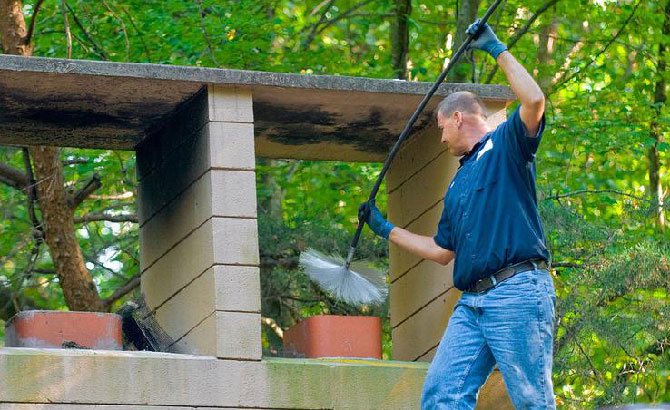
Mechanical
The easiest way to clean the chimney is to mechanically remove blockages and soot deposits. acting on the principle of a brush.
First, it is necessary to assess the degree of clogging and narrowing of the chimney lumen. You can use a flashlight, flexible cable with a video camera.
If there is a physical obstacle in the pipe - a socket, a remnant of slate - it is necessary to push it through with a long stick or pole
We recommend that you familiarize yourself with: Instructions for creating a porch from a profile pipe
Usually, to clean the chimney with the help of human physical strength, special brushes are used, which are sold in stores. They scrape and sweep away the resulting soot layer. Thanks to the flexible handle, this brush can be used to thoroughly clean the pipe.
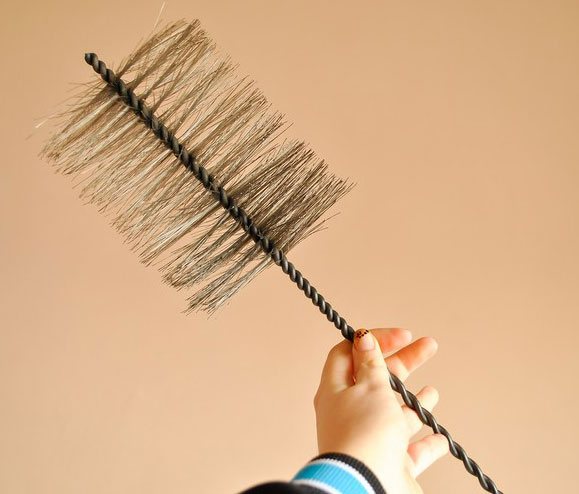

Important! To clean the metal chimney pipe, it is forbidden to use brushes and brushes on a metal base, because they can damage the pipe, leaving scratches on its surface.Only use a nylon or plastic resin brush. You can buy it in the store or make it yourself.
Another option for mechanical cleaning of the chimney is to hang the brush on a special cable with a load. The weighting creates the necessary tension, so that the brush or ruff comes into contact with the surface of the chimney pipe and scrapes off the soot.
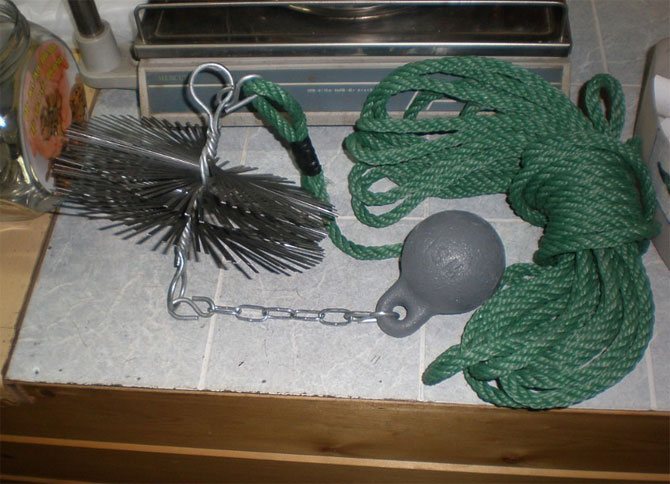

Some people use a simple watering hose to clean the chimney, which is inserted into the pipe and made translational movements. At the same time, the soot is knocked off the surface of the walls and falls into the furnace, from where it is then collected and disposed of.
Mechanical cleaning methods include the use of special equipment operating on the principle of a vacuum cleaner. For example, these can be special installations that are inserted into the outer opening of the chimney on the roof.
The appliance creates a strong draft that sucks out the soot like a vacuum cleaner. The disadvantage of this method is that there is no container or bag for collecting the soot, and the soot and soot to be removed are simply blown out of the pipe into the air. At the same time, the roof and the adjacent territory are polluted. Although this method is quite effective, it usually causes strong resentment among neighbors.
Another similar method is the Tornado set, which consists of six-meter interconnected handles and a nylon brush. The handles are connected in series so that the resulting structure matches the length of the chimney. A brush is attached to its outer end, and the other end is attached to a drill.
The fast rotation of the brush due to the torque of the drill allows you to effectively clean the chimney pipe. To protect against soot, a special film is attached to the firebox, which is sold with the kit.
Chemical
Chemically active substances can be used to remove soot from the chimney, provided that there are no mechanical blockages in the chimney, and the thickness of the plaque does not exceed 2 cm.
We recommend that you familiarize yourself with: Connecting a modern heating radiator to polypropylene pipes
Means in the form of powders, briquettes, fluids for chemical cleaning of the chimney are burned together with fuel. During combustion, they release gases that chemically react with the soot on the pipe surface, which crumbles downward.
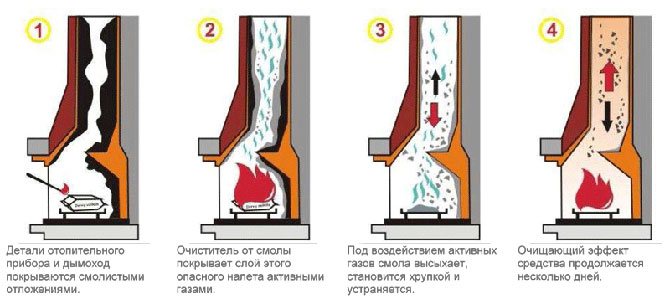

Chemicals, if used correctly, are safe for humans and furnace equipment.
The most famous among them:
- PKH - anti-carbonaceous chemical composition;
- "Kominichek";
- "Log chimney sweep";
- "Smoke";
- Vortex;
- "Sazhinet".
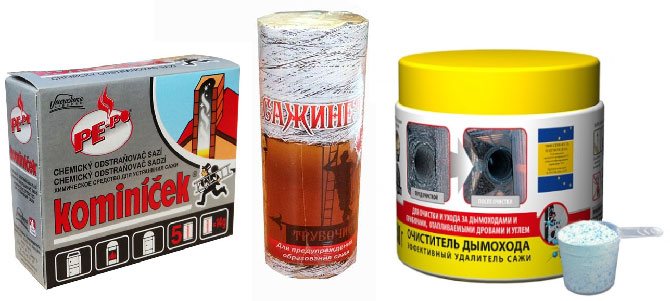

Important! It is optimal to use these reagents as a preventive measure, burning them together with the fuel every few months, preventing the formation of a thick soot deposit. In this case, there is no need to mechanically clean the chimney.
Folk ways
Traditional methods of chimney cleaning are based on the chemical and thermodynamic properties of various materials.
One of the simplest, most affordable and popular folk methods is burning potato peelings in a furnace. In the process of burning, they release starch, which, together with the smoke, settles on the surface of the pipe and enters into a chemical reaction with soot. After a few days, it crumbles completely, leaving the chimney clean.
Another method is burning aspen logs, which, when burning, create an extremely high temperature, due to which the soot itself burns out.
Attention! Using aspen logs is an effective but unsafe way. It cannot be used for metal round chimneys. Since the temperature during firewood burning exceeds 1000 degrees, this can lead to the destruction of the chimney channel and fire the roof. It is advisable to install a spark arrestor to avoid fire.
The last method that can be attributed to the folk is the burning of simple table salt in a firebox. The salt makes the soot layer on the pipe surface soft, but does not completely remove it. This is rather a combined method based on chemical and mechanical cleaning of the pipe (after burning the salt, you need to wait until the pipe cools down and clean the chimney with a brush).
Methods for cleaning a brick chimney
Despite the cause of the blockage, it is necessary to clean the pipe in the bath well from soot. Indeed, the operation of the stove and the speed of warming up the room will depend on the quality of the operation performed. There are a lot of cleaning methods. Sometimes even simple improvised means, such as a brush, cable or hose, are used.
The main cleaning methods are as follows.
- Mechanical method. It involves the use of things such as brushes, brushes, or scrapers.
- The use of chemicals.
- Folk methods.
All these options have their own nuances and a certain technique of work. Each of them should be analyzed in more detail. You can choose the method of chimney cleaning at your own discretion.
How to make a DIY cleaning brush
It is not difficult to make a brush for mechanical pipe cleaning with your own hands. Many craftsmen use improvised means and even household waste for this. The easiest and most popular way to make a brush is from unnecessary plastic bottles or an old broom with synthetic fibers.
We recommend that you familiarize yourself with: Varieties of flexible corrugated chimneys and the rules for their installation
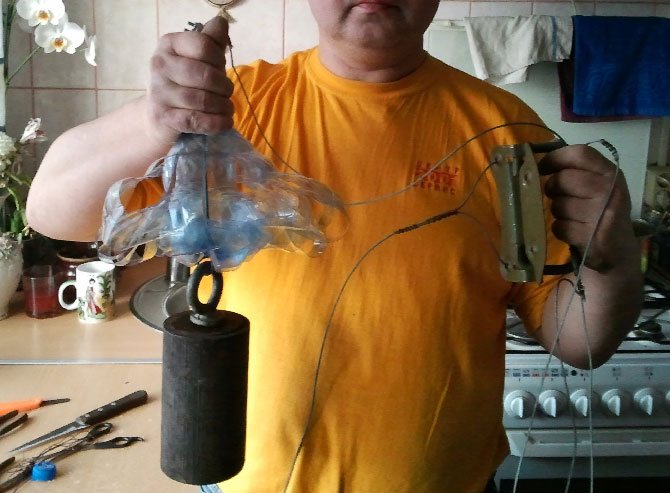

If a bottle (1-3 pcs) is used, you need to cut it in half, then make thin rods with scissors. Disassemble the old broom by detaching the base from the nylon fibers.
To make a brush, you will also need a cable, special clamps for fastening, two "ears", a fixing pin and washers.
- The broom pile or cut bottle must be folded back to form a flat round base.
- The hairpin must be connected to the "ear" and washer, threaded through the hole in the broom and screw the second washer on the other side.
- Then the second "ear" is connected, which must be screwed very tightly so that the broom pile spreads out almost horizontally in the form of a circle.
- With the help of a clamp, the resulting brush is attached to the cable.
Important! The diameter of the brush must match the diameter of the flue pipe. If the brush is smaller, then its nap will not reach the walls, and if it is larger, then the nylon bristles will simply slide along the walls, and not scrape off the soot.
Prophylaxis
Prevention is the most effective method. The system must be cleaned at least 2 times a year. Which way to use is up to the owner to decide as the degree of pollution of the channel.
For prevention purposes, you can clean the chimney with aluminum foil. Burning aluminum turns soot and soot into dust.
In order for the chimney not to clog, you need:
- Insulate it from the outside with special heat-insulating materials.
- It is imperative to place a visor on the pipe, which will prevent blockages from occurring.
If preventive measures are taken in time, then visiting the bathhouse will become safe and bring much more benefits to human health.
Cleaning methods
The profession of a chimney sweep today is so rare that in this matter you have to rely solely on your own strength. But, it is not as difficult and hopeless as it might seem at first glance. There are many ways to quickly and efficiently clean even the most polluted chimney.
The choice of the cleaning method depends on the nature of the violation that has occurred with the system for removing smoke from the stove.
Mechanical
They are used to remove foreign objects with the help of muscular strength.


The following devices are used:
- Ruff. You can buy it or make it yourself from a metal broom. A heavy load is tied to the product, after which it is lowered into the chimney.Depending on the configuration of the chimney, a round or square fixture is used.
- A brush with stiff bristles. It fits snugly on a pole or telescopic handle. Suitable for dry and soft plaque.
- Compressed air. To purge the channel, a powerful compressor capable of creating a strong head is required.
- Hook. Used to push down or pull out stuck foreign objects. The handle is extended with an additional pole or a telescopic extension is placed.
- Watering hose. It is passed through the canal and led along its walls.
Cleaning the chimney with a watering hose
Quite a few bath owners do not really think about how to clean the chimney in the bath. They always have a proven method in their arsenal - cleaning with a watering hose.
In order to clean the pipe in this way, you need:
- remove the glass at the bottom of the chimney;
- insert a hard hose into the hole - from above or below, as it is more convenient for anyone;
- with progressive movements, clean the soot that settles at the bottom of the pipe.
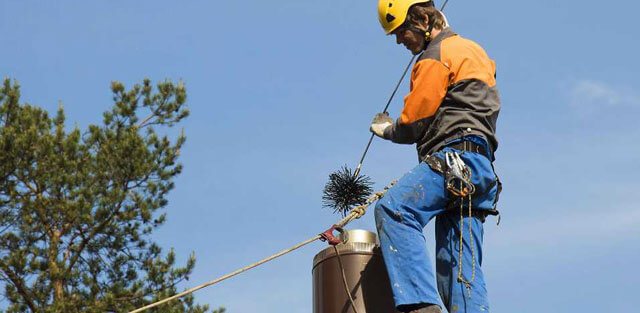

A plastic bottle with pre-cut strips or a brush can be attached to the end of the hose. Such a device will easily clean the chimney.
